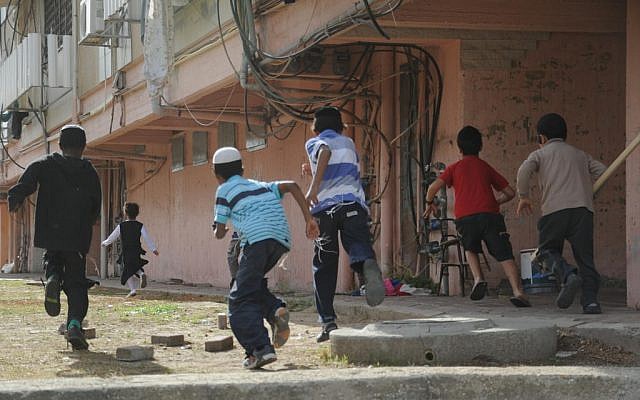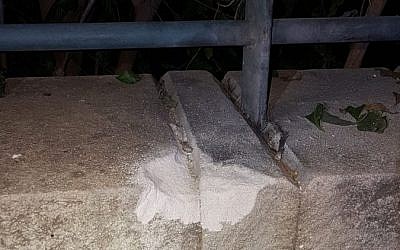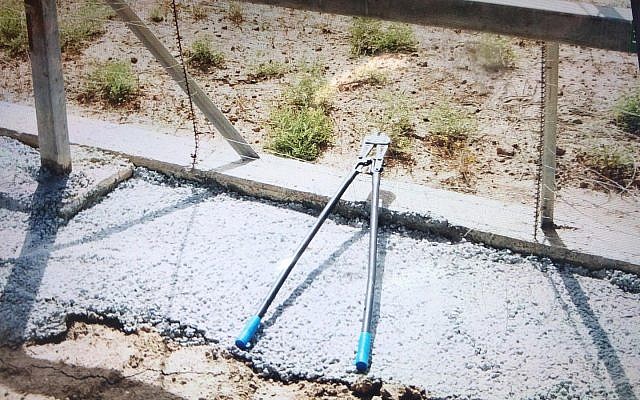Numerous incoming rocket alarms sound on morning after machine gun fire hit buildings, car in Sderot, causing damage but no injuries

A series of incoming rocket sirens were heard throughout southern Israel at 7 a.m. on Tuesday, the army said, amid heightened tensions along the Gaza border.
Residents of the area reported hearing loud explosions.
The army said it was investigating what triggered the system.
The sirens could be heard in communities and towns throughout the area surrounding the Strip, known as the Gaza envelope, sending thousands of residents rushing to bomb shelters.
The alarms came less than 12 hours after Palestinians in the Gaza Strip opened fire with a machine gun at the southern Israeli town of Sderot, causing damage but no injuries, in the second such attack in as many weeks, the army said.
The heavy gunfire triggered incoming rocket sirens in Sderot and the surrounding Sha’ar Hanegev region, according to the army.

The gunfire damaged a number of buildings in Sderot, the city said, as well as at least one car, according to Israel’s Hadashot news.
It was the second machine gun attack on Sderot in under two weeks. On May 16, bullets struck a number of homes in the town, though in that case no rocket siren was triggered.
The region has seen a marked uptick in fighting in recent days, with near-daily cross-border incidents shattering the tense calm that had existed in the area previously.
Unlike previous rounds of violence, Gazan terrorists have refrained from shooting rockets, instead using small arms fire directed at troops, planting bombs, flying incendiary kites, and sneaking across the border to cause minor damage.
Hours before Monday’s machine gun attack, Israeli soldiers came under fire from Gaza, prompting the military to launch fresh strikes on Hamas targets in the Strip, the IDF said.
One Gazan was killed and another moderately injured, according to the Hamas-run Gaza health ministry.
The Israeli troops were arresting two Palestinians who infiltrated into Israel from the Gaza Strip when they came under fire from across the border, the army said.
No Israeli soldiers were reported to be injured.
As a matter of policy, the Israeli army considers Hamas, which rules Gaza, to be responsible for any attack emanating from the beleaguered coastal enclave.
It was the second round of strikes in Gaza in two days, after Israel fired Sunday on an Islamic Jihad position in the southern Gaza Strip, killing three people. It came in response to the discovery of an improvised explosive device placed along the Gaza security fence. The army said the IED targeting IDF troops was disguised to look like a set of bolt cutters.

A spokesperson for the Iran-backed Islamic Jihad terrorist group confirmed the men were members of its military arm.
There were also numerous attempts over the weekend to breach and damage the border fence, the IDF said, as well as several attempted attacks, including one using a drone.
Since March 30, tens of thousands of Palestinians have taken part in weekly protests which Israel says are orchestrated by Hamas and used as cover for attempted terror attacks and breaches of the border fence.
The violent demonstrations were meant to end on May 15, but Hamas leaders have said they want them to continue. Over 10,000 Gazans took part in the demonstrations in the course of Friday and Saturday, the army said.
The demonstrations came to a head on May 14 when the US moved its embassy to Jerusalem and at least 60 Palestinians were killed in clashes — almost all of them Hamas members, the terror group has acknowledged.
As reported by The Times of Israel
